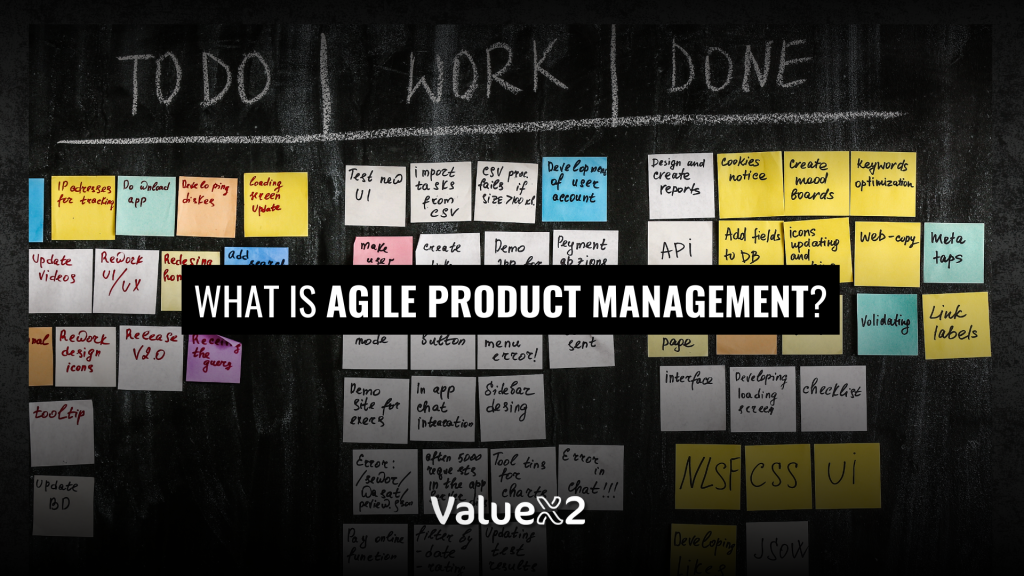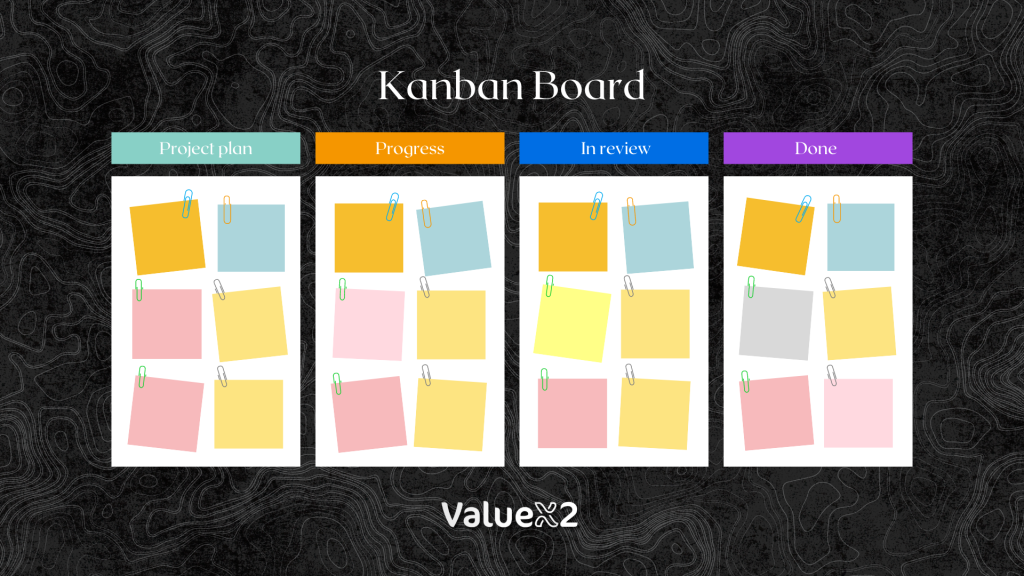Read this detailed guide to understand what is Agile Product Management. Find out about its key components, project management roles, and a lot more. Discover how Agile transforms product management and drives innovation.

Agile Product Management is a relatively new concept which is revolutionizing how products are built, governed, and released. Here, read a comprehensive guide to applying agile in practice – a detailed guide which also covers the significance of Agile, its fundamental concepts and its usage in different fields.
In a more recent VersionOne State of Agile Report 2024, nearly all organizations have incorporated Agile in some manner with a 5% increase from the 2024 statistic. The same report also notes that 58% of organizations reveal increased team output with the use of Agile practices. As we know Agile methodologies help decrease the time-to-market which is substantiated by 54% of organizations.
What is Agile Product Management?
Agile Product Management is a management technique that supports adapting to changes in customers’ demands, project implementation in phases, and constant improvement. Different from a more conventional approach to project management which follows a linear sequence of steps, Agile is iterative which receives feedback and then amends it as soon as possible.
BOOST YOUR CAREER WITH AGILE CERTIFICATIONS – ENROLL TODAY AND TRANSFORM TOMORROW!
Why is Agile Essential in Product Management?
Agile is crucial in today’s fast-paced environment because it enables teams to:
- Respond Quickly to Market Changes: Agile enables one to make changes quickly depending on the information available in the project.
- Enhance Customer Satisfaction: Sustained communication with the customers is effectuated creating feedback loops that will keep on checking if the product meets the customers’ expectations.
- Improve Product Quality: In this way, development is divided into concrete sprints, which allows one to concentrate on the quality of the result.
A Training Magazine also conducted a survey that showed how 49% of training introduces Agile methodologies into their learning and development process.
What Are the Core Principles of Agile Product Management?
- Customer Collaboration: Communicate with the clients regularly to know that the product does meet their requirements.
- Incremental Development: Incremental releases of small but workable pieces of the product should be made and information regarding their usage should be collected to make improvements, if required.
- Adaptability: Listen more to the customer feedback and be ready to make alterations to what has already been planned to enhance the final product.
Apparently, a recent study conducted by the Scrum Alliance of Business Agility in 2024 shows that 63 % of organizations observe ROI when implementing Agile practices.
How Does Agile Product Management Differ from Traditional Methods?
Conventional product management as distinguished from today’s more fluid ecosystems is often sequential and prescriptive, meaning that it is neatly mapped from its beginning to its end. On the other hand, Agile is based on the concept of flexibility; the teams work in frames of iterations called sprints and deliver portions of the product at a time. This can be done and adjusted based on customers’ feedback or any changes within the market so that the product is modified to suit the market needs.
1. Flexibility versus Predictability Agile
Agile: Agile methods by nature are flexible and designed to alter according to emerging customer needs and market conditions. The biggest factor contributing to flexibility would be Team adaptability, as it helps to shift quickly to trends as they emerge.
Traditional: Traditional product management is more predictable and structured. It follows a linear approach where the focus is more on completing each step in a fixed sequence, giving less room for change after the project has started.
2. Customer-Centric Focus vs. Process-Centric Focus
Agile: This approach is highly customer-centric; feedback is sought at each stage to incorporate into the product. Collaboration ensures the product is fully developed as needed by customers.
Traditional: The product development teams might be too enamoured with the process; this often results in too much delay or a final product that may not fully meet what the customer expects.
3. Iterative Sprints Vs. One-Size Fits All Approach
Agile: Agile is built on iterative sprints in which the product is delivered in short cycles, producing a working version of the product or feature each time. That way, teams can test and learn to adjust continuously. This is a custom-fit solution tailored to the needs of each team, product, and user base.
Traditional (One-Size-Fits-All Approach): Traditional project management often employs a one-size-fits-all approach, with the product planned and built against one set of specifications, without much space for customization or iterative change. This rigid approach assumes that the product would fulfil all user needs right off.
According to a survey conducted by CollabNet VersionOne, it was found that 43% of organizations experience difficulties when it comes to the scalability of Agile practices, especially in large teams.
Let’s understand with a table:
| Aspects | Agile Product Management | Traditional Product Management |
| Focus | Product development and delivery | Market positioning and promotion |
| Objective | Deliver high-quality products quickly and efficiently | Increase product visibility and drive customer demand |
| Approach | Iterative and incremental development | Strategic planning and execution |
| Methodology | Agile methodologies (Scrum, Kanban, etc.) | Marketing strategies and tactics |
| Primary Activities | Sprint planning, backlog refinement, product iterations | Market research, campaign development, branding |
| Key Metrics | Velocity, sprint burndown, product backlog | Market share, customer acquisition cost, conversion rate |
| Customer Interaction | Regular feedback during development cycles | Engagement through marketing campaigns and customer outreach |
| Team Roles | Product Owners, Scrum Masters, Development Teams | Product Marketers, Marketing Managers, Advertising Specialists |
| Documentation | User stories, product backlogs, sprint reviews | Marketing plans, campaign briefs, sales collateral |
| Timeframe | Short, iterative cycles (sprints) | Long-term strategy and planning |
| Feedback Integration | Continuous feedback incorporation from users | Feedback primarily from market research and sales data |
| Success Measurement | Product delivery efficiency, user satisfaction | Market impact, brand awareness, sales performance |
How to Implement Agile in Learning and Development?

Implementing Agile in learning and development involves:
- Iterative Training Programs: Introduction: training material, according to the participants’ feedback, update and improve.
- Continuous Improvement: Replace old and outdated training materials and incorporate new relevant material to meet the changing needs of the business.
- Cross-Functional Teams: It would also be best for you to get participants in the team from different departments concerning the interest of the exposure.
According to the survey of Agile by Harvard Business Review, 71% of companies’ satisfaction with customers increases.
Scaling Frameworks Detailed Guide
For organizations that wish to take the next step and bring Agile at scale, there are two well-defined structures such as SAFe (Scaled Agile Framework) and LeSS (Large Scale Scrum). These frameworks offer directions on how Agile processes should be implemented within many teams; this is particularly good for large-scale development.
How Can Agile Product Management Drive Innovation in an Organization?
Agile Product Management is not just about adapting to changes but also about fostering an environment where innovation can thrive. By allowing teams to work in iterative cycles, Agile encourages experimentation and continuous improvement. This approach enables organizations to test new ideas quickly, gather feedback, and refine their products to better meet market demands. As a result, Agile Product Management becomes a powerful tool for driving innovation, helping companies stay competitive in an ever-evolving landscape.
Agile Product Management’s emphasis on collaboration and flexibility empowers teams to break down silos and work more cohesively. Cross-functional teams bring diverse perspectives to the table, sparking creative solutions that might not emerge in a more rigid, traditional management structure. By prioritizing customer feedback and being open to change, Agile teams can pivot quickly, adopting new technologies or approaches that keep them at the cutting edge of innovation. This iterative process not only enhances the final product but also cultivates a culture of continuous learning and innovation across the organization.
What’s More to Know?
Check out ValueX2’s upcoming training to get certifications like Agility in HR, SSM, SASM, SAFe POPM and others. These agility courses are ideal to meet the needs of ambitious professionals in whom the need to contribute as an agile leader emerges, these courses equip you with up-to-date knowledge and tools that can revolutionize your career. For people who want to grow in their existing area of practice as well as those who wish to make a career transition, our courses give you the edge. It would be wise not to miss the chance to keep you updated with the latest trends in the constantly developing atmosphere of agile practices! Know about our upcoming training sessions here!
Learn more about agile methodologies here in our blog section.
Conclusion
The discipline of Agile Product Management means a radical shift in product development and management which is quite opposite to the conventional methods. Living by Agile means that the teams can learn how to respond quickly to changes within the market, as well as increase the satisfaction of their customers while making the products that are getting delivered more excellent. That is, Agile also promotes the culture of development in phases and steps and is aimed at gradual development.
With more organizations embedding Agile in their workflow, knowledge of what it actually entails and its advantages proves important. Whether having to expand agile implementations or use agile in training and development, there are quite many benefits that come with implementing agile. Adopting the concept of Agile Product Management can help your team build a competitive strategy when working in a constantly changing environment to develop products that would fit the needs and wants of the customer.
FAQs
Q. What is Agile Product Management?
Agile Product Management is focused on the use of an iterative process that provides the opportunity to deal with change and to deliver value progressively. The importance of certification is that it shows proficiency in using Agile approaches to product management and may help in an individual’s professional life.
Q. What is the relation between Agile and Artificial Intelligence?
Agile is especially beneficial for AI development because of its ability to make many small improvements with the new data availability.
Q. Which tools are applicable to Agile Project Management?
Examples of a few tools applicable in Agile project management are JIRA, Trello and Asana among others, which assist the team in planning and tracking tasks. Visit here to learn more about Agile Project management tools

Bhavna is an Agile Coach and Consultant with 15+ years of experience in advisory, corporate finance, IT assurance, and operations at Big 4 and within the industry in the UK and India. She has recently been the CEO of a start-up where she implemented agile practices within HR, Marketing, and Product teams.
She is also a SAFe® Practice Consultant (SPC) and authorized instructor for ICAgile Agility in HR (ICP-AHR), Agility in Marketing (ICP-MKG), and Business Agility Foundations (ICP – BAF) training courses. She provides training for agile transformation to corporate, public, and private batches, as well as consulting for enterprise agile transformation.






